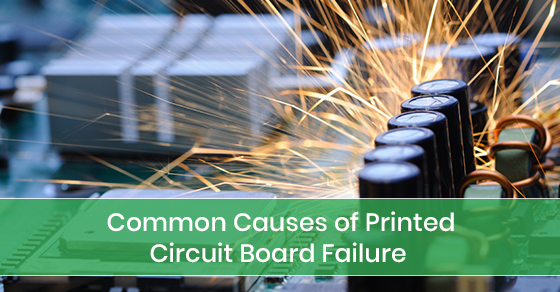Common Causes of Printed Circuit Board Failure
When it comes to electronic circuit design services, designers need to work meticulously and prudently in order to reduce the risk of printed circuit board failure. Even highly skilled electronics designers may run into issues that have nothing to do with their skills or expertise, such as certain environmental factors.
Here, we will delve into some of the most common causes of printed circuit board failure in the industry, with some being the result of negligence or ineptitude on the part of electronics designers, while others are caused by environmental problems.
What are Printed Circuit Boards?
Virtually all electronic devices or units will have a printed circuit board. They are considered essential components for airplanes, satellites, wearables, medical devices, and other electronics to work as designed.
It is for this reason that printed circuit board failure is a pressing issue that should not be taken lightly. It is also why measures must be taken to avoid printed circuit board failure in the first place.
Component Design Issues
Sometimes, electronics designers may accidentally place certain components in the wrong place. Or, a lack of space on the printed circuit board may lead to overheating in some cases.
Another common cause of component design failure is an outright power failure. Some related issues may ensue during the manufacturing and design phase of printed circuit board manufacturing.
For instance, burned components can cause issues, as can component barrier breakage. In addition, chemical fluids may sometimes leak, or there may be some soldering issues that transpire during the design and manufacturing stage.
However, poor component placement is arguably the most common cause of component design failure, something that can be easily corrected with the proper know-how, patience, and technique.
Poor Quality Component Issues
While the skill of electronics designers is paramount, so is the quality of the actual components that they work with. There are also closely situated pathways and traces to worry about, and cold joints and subpar soldering may also lead to poor quality components.
What’s more, the thickness of the boards may not suffice, or there may be shoddy connectivity between the printed circuit boards in question.
Unfortunately, a fairly common culprit for mediocre printed circuit board quality is the manufacture and sale of contraband components on the market, which is a multi-million dollar industry.
Environmental Causes of Printed Circuit Board Failure
It is important to note that circuit board failure may also be the result of a myriad of different environmental factors. For example, an accidental impact, such as a fall or drop, can cause circuit board failure in some cases. Exposure to moisture, dust, or extreme heat may also lead to eventual printed circuit board failure.
Even power surges or overloads can cause a printed circuit board failure, so electronics designers need to be on the lookout for such environmental causes of printed circuit board failure.
However, it should be noted that the most common cause of environmentally induced printed circuit board failure is ESD (electrostatic discharge). ESD usually takes place during the assembly stage of printed circuit boards and is the most damaging cause of printed circuit board failure at the premature phase.
As can be seen, thermal stress and other environmental factors can lead to printed circuit board failure. However, there is one environmental factor that is inevitable, and that factor is age.
In other words, circuit board failure that is brought upon by age cannot be reversed. However, you can mitigate most of the component replacement costs by swapping out the old components for brand new parts. This approach is far more effective than starting from scratch a new printed circuit board assembly.
What to Do When a Printed Circuit Board Fails
If your printed circuit board fails, there are a bevy of different solutions at your disposal. However, the best way to deal with a faulty or damaged circuit board is to repair it.
Unfortunately, many companies opt to replace the entire board instead of taking the time to repair it. Repairing a defective or damaged board is far more cost-effective than a full-on replacement, and it is also the fastest way to get your board to work to its full potential.
You can also opt for a third party repair enterprise over more conventional repair companies, as some original equipment manufacturers may charge repair prices that are above the average. They also may not be able to provide exceptional turnaround times due to an excessive workload.
In sum, the vast majority of failure problems can be taken care of via some reworking, which should take place after a thorough and careful analysis and inspection have been performed.
Most experts agree that the absolute best way to prevent — or at least reduce — the risk of printed circuit board failure, is to partner with a reputable and established printed circuit board assembly company in the area.
To learn more about the causes of printed circuit board failure, call Circuits Central at 888-821-7746 or contact us here.

